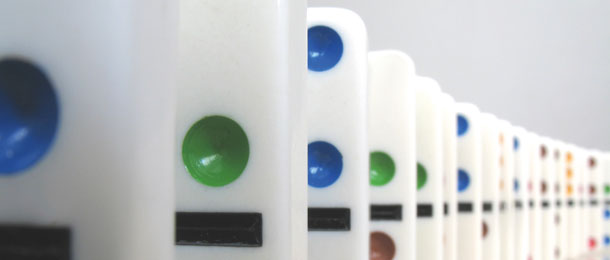Retirees investing with fund managers need to be more conscious of the extent to which their allocations will experience both the upsides and downsides of market performance from a combined perspective to formulate the most effective strategy against sequencing risk, a global wealth manager has said.
Fidelity International head of client solutions and retirement Richard Dinham referred to the difference between the returns a manager delivers during both bull and bear markets compared to the index as capture spread and advised wealth houses delivering the largest capture spread are likely to provide the best outcomes for individuals in retirement.
Analysis conducted by Fidelity comparing three managed funds – one with a capture spread of 20 per cent (80 per cent downside capture and 100 per cent upside), one with a 30 per cent capture spread of 30 per cent (80 per cent downside capture and 110 per cent upside capture), and one with a 40 per cent capture spread (40 per cent downside capture and 80 per cent upside capture) – showed the fund with the highest capture spread performed the best for retirees over a 20-year period.
This scenario was based upon an original investment amount of $500,000 with a monthly drawdown of $3000.
“The difference in performance was quite startling. The way that compounding works in retirement when you are decumulating from a forward capital – by protecting the portfolio to a degree when markets are down, you get a massive divergence with those funds that are just falling and rising with the market performing least well,” Dinham said.
“[Conversely when a fund] protects so well when markets are down you get a much better compounded outcome through time.”
He pointed out the results are based on the money-weighted outcome, which represents what individuals actually receive from their investments.
Comprehending the capture spread concept requires an understanding of how compounding operates differently when a person is in decumulation phase as opposed to accumulation phase, he added.
In decumulation, or retirement, phase, compounding works such that a positive return has to be double that of a negative return for an investor to break even, he noted.
For example, a 50 per cent loss would require a compensatory gain of 100 per cent just to achieve a break-even result, he said.
“Investors still need to take on equity risk, but the compounding effect of investment losses can have a devastating effect on retirement portfolios,” he noted.
“Accordingly, the right kind of equity risk in retirement should come with excellent downside capture to protect in down markets and a capture spread that enables sufficient participation in the market upswings.
“This approach has been shown to deliver better outcomes in retirement.”




